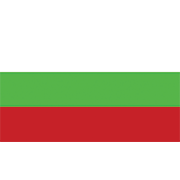Fiscal subject related
The Bulgarian National Bank (BNB) Governing Council has approved the revised graphic designs for Bulgaria’s national side of euro coins across all denominations, confirming their readiness for production ahead of the country’s anticipated euro adoption.
Denominations & Symbols:
· Euro coins consist of two sides—a common European side and a national side that reflects the issuing country. Bulgaria's national side will follow the standard requirement of displaying a circle of 12 stars, as seen on the EU flag. It will also include the word" "BULGARIA"/"БЪЛГАРИЯ" in Cyrillic script to indicate the country of origin. A distinctive feature of the Bulgarian two-euro coin will be the edge inscription, which reads "GOD PROTECT BULGARIA" / "БОЖЕ ПАЗИ БЪЛГАРИЯ" in one direction and the same phrase in reverse on the other half of the edge.
· In addition to the required elements, optional inscriptions have also been chosen. The 1- and 2-euro coins will include the word "euro" / "евро" in Cyrillic, while the 1-cent coin will carry the word "stotinka" / "стотинка," and the 2, 5, 10, 20, and 50-cent coins will feature "stotinki" / "стотинки" in Cyrillic script.
· 1, 2, 5, 10, 20, and 50-cent coins: Feature the Madara Horseman, a UNESCO-listed medieval rock relief.
· 1-euro coin: Depicts St. Ivan Rilski, Bulgaria’s patron saint.
· 2-euro coin: Showcases Paisius of Hilendar, a key figure of the Bulgarian National Revival.
Mandatory elements:
· 12 EU stars, Cyrillic "BULGARIA," and the year "2026."
· The 2-euro coin’s edge inscription reads "GOD PROTECT BULGARIA" (mirrored).
Optional Details: Cyrillic spellings of "euro," "stotinka" (cent), and the year of euro introduction.
The designs mirror motifs from Bulgaria’s current lev coins, ensuring familiarity. "The symbols are deeply rooted in our identity and widely accepted by citizens," the BNB stated. Artistic revisions were finalized by Monet Dvor EAD, Bulgaria’s minting authority. The EU Council greenlit Bulgaria’s designs in February 2024 (Decision IN5693/24), aligning with EU Regulation 729/2014. Euro coins will pair these national sides with a common EU design by Luc Luycx of Belgium’s Royal Mint. Bulgaria targets euro adoption by 2026, pending inflation and ERM-II criteria. The coin designs underscore cultural pride while meeting EU standardization requirements. However, we need to underline that the final date for adopting the euro as an official currency is not officially released.
Other news from Bulgaria
The National Revenue Agency (NRA) begins implementation of the international accounting standard SAF-T in Bulgaria.
 Bulgaria
Author: Nikolina Basić
Bulgaria
Author: Nikolina Basić
Bulgaria’s National Revenue Agency (NRA) has launched the phased implementation of the international SAF-T standard for digital tax reporting, starting with large taxpayers in January 2026. Draft technical guidelines will be published in May 2025, followed by a six-month pilot beginning in July with select large enterprises. Over the next five years, the SAF-T requirement will gradually expand to... Read more



What is New in the Draft of Ordinance No 18 Regarding Fisal Devices in Bulgaria?
 Bulgaria
Author: Nikolina Basić
Bulgaria
Author: Nikolina Basić
A new draft law (Ordinance No. 18) was released last week, outlining updated fiscal device regulations in preparation for Bulgaria’s euro adoption. The proposal introduces extensive new requirements, especially for gas station software and IASUTD systems, including rules for e-receipts, currency conversion, fiscal reports, and device homologation. Read more



Bulgarian National Bank Clarifies Eurozone Accession Process Regarding Introduces the Euro as an Official Currency in Bulgaria
 Bulgaria
Author: Nikolina Basić
Bulgaria
Author: Nikolina Basić
The Bulgarian National Bank (BNB) has released the second part of its Q&A series on Bulgaria’s upcoming eurozone entry, focusing on eurozone governance and monetary policy. Key changes include a shift to the ECB’s monetary framework, reduced reserve requirements for Bulgarian banks, and increased capital contributions to the ECB. The BNB continues its public education campaign to ensure a smooth a... Read more



TLv6 Implementation Marks Significant Shift in EU’s Trust List Format
A new EU Trust List format, TLv6, will officially replace TLv5 in May 2025 as part of the updated eIDAS Regulation (EU 2024/1183). It introduces key technical changes like a new URI field, updated signature format, and optional phone number support. Organizations must update their systems to avoid signature validation failures and service disruptions, as TLv5 will no longer be valid once TLv6 take... Read more



The Draft Ordinance No. H-18 of 2006 on Registering and Reporting Sales in Retail Outlets Through Fiscal Devices, the Requirements for Software for Their Management and Requirements for Perso
 Bulgaria
Author: Nikolina Basić
Bulgaria
Author: Nikolina Basić
The Bulgarian Ministry of Finance has released a draft amendment to Regulation No. H-18, introducing significant updates related to fiscal devices, software requirements, and electronic sales, now open for public consultation. Read more



Bulgaria Outlines Exchange Process for Levs After Euro Adoption
 Bulgaria
Author: Nikolina Basić
Bulgaria
Author: Nikolina Basić
As Bulgaria prepares to adopt the euro, the Bulgarian National Bank has introduced a permanent, free and unlimited exchange service for converting levs to euros at the official rate, with no expiration date. During the first six months, banks and post offices will also handle exchanges under specific conditions, including daily limits and advance notice for larger amounts. Lev banknotes and coins... Read more


